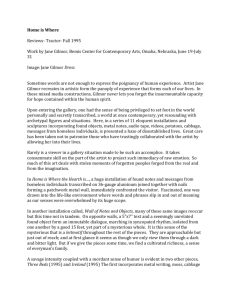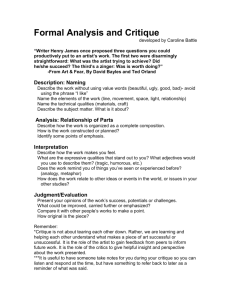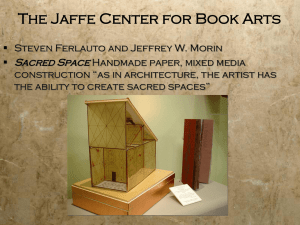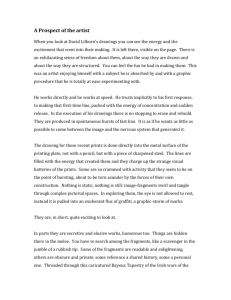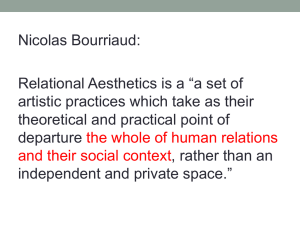Style Style refers to how the artist uses the elements of art, principles
advertisement
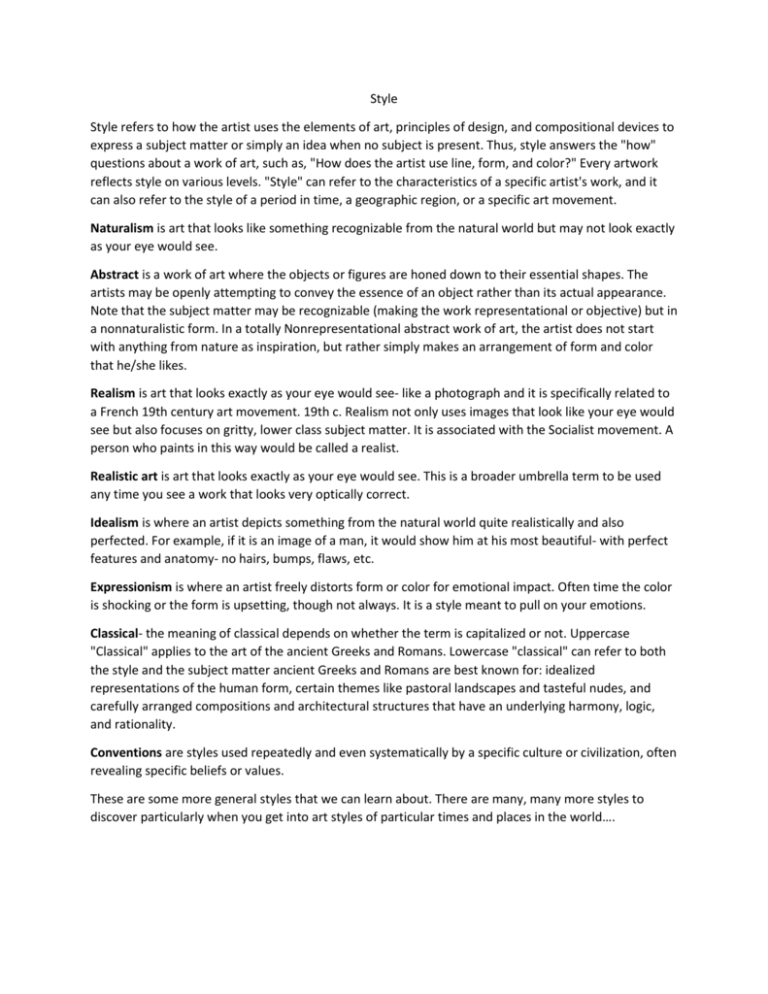
Style Style refers to how the artist uses the elements of art, principles of design, and compositional devices to express a subject matter or simply an idea when no subject is present. Thus, style answers the "how" questions about a work of art, such as, "How does the artist use line, form, and color?" Every artwork reflects style on various levels. "Style" can refer to the characteristics of a specific artist's work, and it can also refer to the style of a period in time, a geographic region, or a specific art movement. Naturalism is art that looks like something recognizable from the natural world but may not look exactly as your eye would see. Abstract is a work of art where the objects or figures are honed down to their essential shapes. The artists may be openly attempting to convey the essence of an object rather than its actual appearance. Note that the subject matter may be recognizable (making the work representational or objective) but in a nonnaturalistic form. In a totally Nonrepresentational abstract work of art, the artist does not start with anything from nature as inspiration, but rather simply makes an arrangement of form and color that he/she likes. Realism is art that looks exactly as your eye would see- like a photograph and it is specifically related to a French 19th century art movement. 19th c. Realism not only uses images that look like your eye would see but also focuses on gritty, lower class subject matter. It is associated with the Socialist movement. A person who paints in this way would be called a realist. Realistic art is art that looks exactly as your eye would see. This is a broader umbrella term to be used any time you see a work that looks very optically correct. Idealism is where an artist depicts something from the natural world quite realistically and also perfected. For example, if it is an image of a man, it would show him at his most beautiful- with perfect features and anatomy- no hairs, bumps, flaws, etc. Expressionism is where an artist freely distorts form or color for emotional impact. Often time the color is shocking or the form is upsetting, though not always. It is a style meant to pull on your emotions. Classical- the meaning of classical depends on whether the term is capitalized or not. Uppercase "Classical" applies to the art of the ancient Greeks and Romans. Lowercase "classical" can refer to both the style and the subject matter ancient Greeks and Romans are best known for: idealized representations of the human form, certain themes like pastoral landscapes and tasteful nudes, and carefully arranged compositions and architectural structures that have an underlying harmony, logic, and rationality. Conventions are styles used repeatedly and even systematically by a specific culture or civilization, often revealing specific beliefs or values. These are some more general styles that we can learn about. There are many, many more styles to discover particularly when you get into art styles of particular times and places in the world….






